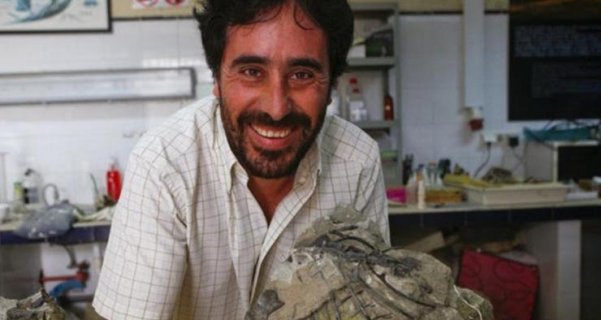A new study published in PlosOne magazine "reveals the most complete plesiosaur skull in sub-Saharan Africa, having been discovered and excavated in Namibe province, Angola, by Octávio Mateus, in 2017", reads the statement released on the evening of Tuesday.
The study of this 72-million-year-old marine reptile was the result of the Master's thesis in Paleontology at the Universidade Nova de Lisboa, in association with the University of Évora, by Miguel Marx, adds the note.
"In addition to being the most complete plesiosaur in sub-Saharan Africa, the finding is important because it has a well-preserved and articulated skull," the statement said, adding that this "is the latest discovery" of the PaleoAngola Project, a scientific initiative that it has already made known the first dinosaur from Angola and other fossil vertebrates from that country, as part of the cooperation between Universidade Nova de Lisboa, Museu da Lourinhã, Universidade Agostinho Neto in Angola and other institutions in the United States and the Netherlands.
According to the note, the finding now highlighted "was classified as Cardiocorax mukulu, a species that the PaleoAngola Project had already discovered in Angola, in 2015".
The elasmosaurid plesiosaurs, "similar to the mythical Loch Ness monster", could reach 20 meters in length, with small heads and very long necks, he says.
The well-preserved three-dimensional nature of the skull offers a rare glimpse into the cranial anatomy of these plesiosaurs, he adds.
According to the same note, the new specimen of Cardiocorax mukulu was recovered in Bentiaba, Namibe province, in rocks of the Late Cretaceous, about 72 million years old.
"The Cardiocorax mukulu represents an older lineage of elasmosaurids that has changed little in tens of millions of years, which surprised paleontologists", he points out, noting that the computed tomography of the skull revealed that the cranial anatomy of this lineage has changed little over the years of 22 million years.
The laboratory work was done at Universidade Nova de Lisboa and the main author of the study, Miguel Marx, who finished his Masters in Portugal, will start his PhD at Lund University, Sweden, later this month.
Co-authors include Octávio Mateus, from the Universidade Nova de Lisboa and Museu da Lourinhã, Louis Jacobs and Michael Polcyn, from the Southern Methodist University in the United States, Anne Schulp from the Naturalis Biodiversity Center and the University of Utrecht in the Netherlands; and Olímpio Gonçalves, from the Agostinho Neto University, in Angola.
Many of the Angola fossils collected by this team are currently on display at the Smithsonian's National Museum of Natural History, Washington, in the temporary exhibition "Sea Monsters Unearthed".
Afterwards, they will pass through Portugal, before they all return definitively to Angola. Some fossils of this species can also be seen at the Museu da Lourinhã before returning to their origins, the note said.
Portuguese paleontologists discover in Angola one of the most complete plesiosaurs in Africa
One of the most complete plesiosaurs in Africa was discovered in Angola by paleontologists from the Universidade Nova de Lisboa, the higher education institution announced in a statement.







